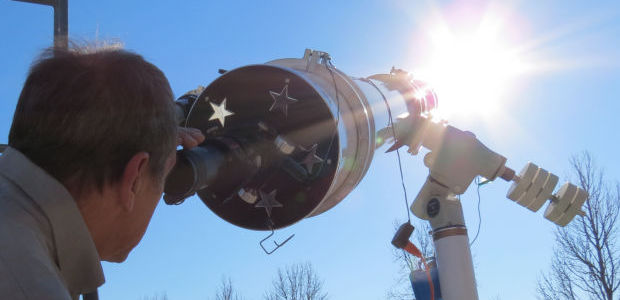
St. George Observatory recognized for outreach effort
January 29, 2013Terrebonne council OKs pay hike
January 29, 2013In four months’ time, Terrebonne Parish residents will decide between a major hike in their water rates, or paying a property tax that officials say will put a lid on increases, while protecting them from further price jumps.
Owners of businesses that use large quantities of water are just now getting on their learning curves as they decide what will be best for them.
Local government officials say they hope voters throughout the parish will do the same thing, so that when the May 4 election is held they will be well-schooled on their choices.
“We can’t express an opinion on it, so all we can ask is that people examine the facts very carefully and make the decision they decide will be best for them,” said Michael Sobert, Consolidated Waterworks District No. 1 general manager, who will be introducing voters to the concepts between now and the vote.
The cost for the average homeowner of the 2.11-mil tax assessment would be $1.15 per month, according to documents prepared by the district. There would still be a charge for water based on gallons used. The millage, if approved, would be paid to the Bayou Lafourche Freshwater District, from which Terrebonne receives most of its water, once Terrebonne became a member of that district with seats on its board.
The increase in water rates if the millage – and membership in the BLFD – is approved, would be around $3 per month more than what consumers pay now with water charges at about 30 cents per 1,000 gallons, Sobert said.
But costs for Terrebonne Parish if not made a member of the district could rise to 50 cents per 1,000 gallons and could continue to escalate in later years.
A combination of increasing salt in watersheds and political changes on the water board that governs adjoining parishes has created the unusual turn of events for Terrebonne. The May 4 tax decision will affect household budgets but will have an even bigger effect on businesses that use major quantities of H2O.
Details of the two options – a “yes” or “no” vote – are just now being presented to voters. A proposed millage increase for Terrebonne public schools is also on the May 4 ballot.
The chain of events leading to the water ballot measure is long and complex.
Currently, Terrebonne residents receive their water from the Consolidated Waterworks No. 1, an entity separate from parish government with its own governing board. The waterworks manages and maintains water lines and water mains throughout the parish – and a small portion of Lafourche – and treats the water it buys from the Bayou Lafourche Fresh Water District.
Terrebonne is the largest consumer of water from the Bayou Lafourche Fresh Water District and pays 3 cents per 1,000 gallons of water. Unlike the BLFD’s other customers – Thibodaux, Lafourche, Assumption and Ascension parishes – Terrebonne has no representation on the district’s board.
The agreement between Terrebonne and BLFD is based on a contract that expires in 2014. A new BLFD master plan calls for a rate of 30 cents per 1,000 gallons, but only for the entities that are members of the district. Terrebonne, as a non-member, could be charged more than that and would have no say in the matter. Current estimates are that the cost for Terrebonne could rise to 50 cents per thousand gallons.
But if Terrebonne becomes a member – with residents paying the 2.11 millage, as the member parishes and Thibodaux do now – the parish would have four seats on the BLFD board, giving it a say in future rate changes.
Terrebonne has some water sources of its own.
Water is drawn from the Gulf Intracoastal Waterway and Bayou Black. But both of those sources have suffered increasing salt content and are closely watched. When the salt content is too high, that water is not allowed to enter the system. That, said Sobert, is why Terrebonne’s water sources outside of the BLFD are unstable and unreliable.
The Terrebonne Parish Council has already passed the resolution, which poses the issue to voters.
So far, there is no organized opposition to the proposed water millage be imposed in Terrebonne, and that it become part of the BLFD. But specifics are still trickling out.
Business owners who use large amounts of water are just now learning the details of the plan.
Several large consumers of water in Terrebonne contacted last week said they were still reviewing details and could not yet form an opinion.
Mike Voisin of Motivatit Seafood, a major Houma oyster processor, is among business owners trying to collect as much information as possible before making a decision.
He is not surprised that the cost of water, which has not been a local issue until now, is coming to the forefront. And he has no doubt that his business will be affected.
“We use a lot of water,” he said last week in a phone interview, adding his awareness that water availability globally has become more of problem each year. “Fresh water is what future wars will be fought over because of all the challenges. We are concerned here because as Terrebonne gets higher salinity because of saltwater intrusion I know we have got to pull more. It is a concern because of the challenges. We are concerned because as Terrebonne gets higher salinity with saltwater intrusion we have got to pull more. It is a concern and a cost and we will see how it develops. So far water has not become a major part of our bottom-line cost.”









